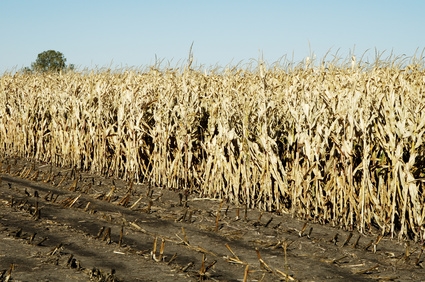
Ethanol is a compound with the molecular formula C2H5OH. It is volatile and highly flammable, which makes it an attractive prospect as an alternative fuel. Countries such as Brazil and the United States have promoted the use of ethanol to reduce gasoline consumption, but the move has sparked considerable controversy. Ethanol can be produced with corn and sugarcane.
Some yeasts break down sugars such as glucose using a process called ethanol fermentation. The microbe extracts energy from these reactions and releases ethanol as a byproduct. To produce ethanol from sugarcane, the sugar is extracted and used as a nutrient for the yeast. Corn, on the other hand, has plenty of starch. Starch molecules are essentially long chains of glucose units bonded together and the starches can be broken down to yield sugars that act as a feedstock for the yeast. The ethanol produced by the yeast must be distilled and dehydrated to remove water.
Dependence on fossil fuel makes importing countries dependent on exporting countries, making importers heavily reliant on other governments. Moreover, the world supply of crude oil is not limitless. By contrast, ethanol, whether from sugarcane or corn, is a renewable fuel produced from plants that remove CO2 from the atmosphere as they grow. It's also a cleaner-burning fuel than either coal or gasoline.
Growing crops for fuel requires a substantial amount of land and resources. And in many cases, the land and resources might otherwise be dedicated to food production. The energy balance, or the ratio between the energy used to produce ethanol and the energy it generates, is especially critical because so many steps are involved in growing and harvesting crops and producing fuel. However, the energy balance is difficult to calculate and scientific studies often arrive at different results depending on their assumptions.
Because the end product is ultimately the same, the most important distinction between corn and sugarcane ethanol is the energy balance. The process for corn is a little different from the process for sugarcane. Cornstarch must be broken down into sugar before it's used as a feedstock. Both plants also have their own growing requirements and yield different amounts of feedstock per acre. These factors, along with the different climates where they are grown, mean that sugarcane and corn ethanol have a different energy balance. Estimates vary widely. One study in Natural Resources Research in 2005 found that corn ethanol used up to 29 percent more energy than it produced. Another study, published in Proceedings of the National Academy of Sciences in 2006, found that corn ethanol yielded 25 percent more energy than the energy used to produce it. The most common conclusion at present--as cited in a 2007 National Geographic article--is that corn ethanol produces 1.3 times more energy than it consumes, while sugarcane ethanol produces eight times as much energy as it consumes during production.
Corn ethanol has attracted critics because of its more unfavorable energy balance and the amount of land it requires. A 2006 study in Proceedings of the National Academy of Sciences notes that dedicating all of U.S. corn production to corn ethanol would replace 12 percent of U.S. gasoline consumption. Sugarcane ethanol clearly has a better energy balance than corn. Some critics, however, are concerned that the industry might contribute to deforestation in Brazil by clearing rainforest for sugarcane plantations. Despite its potential environmental effects, however, production of ethanol from sugarcane is more efficient than production from corn.